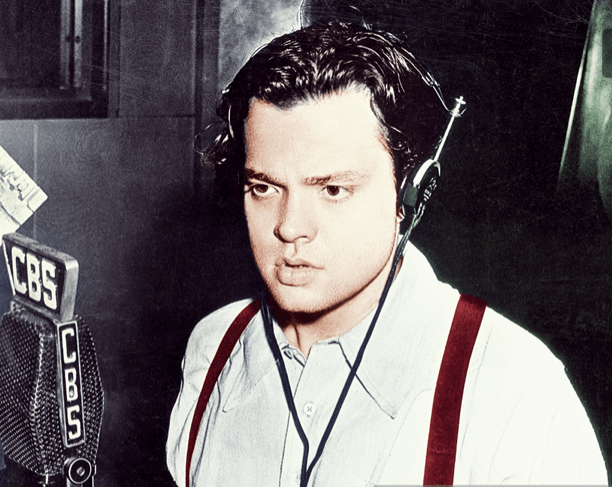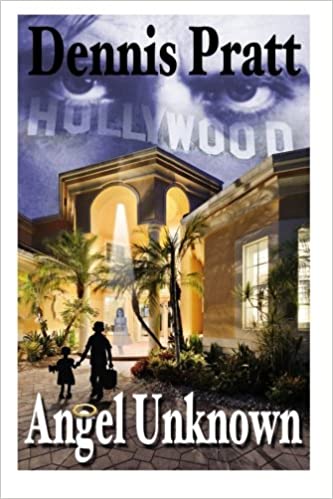Meet my friend, actor, screenwriter, and author Dennis Pratt. We have been writing partners on multiple projects since 1993, including Leprechaun 3, Leprechaun 4 in Space, Britannic, In Her Line Of Fire, Omega Code 2, The Cabin, and Drive Hard. He brings an actor’s insight to the characters he writes. He will make occasional contributions to this website.

Greetings, Earthlings! Before there was Netflix, before there was HBO, before there was cable, and before there was television – there was the wonder of… Radio!
 Voices from distant places piped into the homes of people who used their imaginations to create their own version of the characters who spoke to them from afar. The radio stations used RCA 44BX microphones, which had two live faces and two dead ones. Thus actors could face each other and react. An actor could give the effect of leaving the room by simply moving his head toward the dead face of the microphone. The scripts were paper-clipped together, to minimize unwanted sounds. Actors would drop finished pages to the carpeted floor after use.
Voices from distant places piped into the homes of people who used their imaginations to create their own version of the characters who spoke to them from afar. The radio stations used RCA 44BX microphones, which had two live faces and two dead ones. Thus actors could face each other and react. An actor could give the effect of leaving the room by simply moving his head toward the dead face of the microphone. The scripts were paper-clipped together, to minimize unwanted sounds. Actors would drop finished pages to the carpeted floor after use.
There were mysteries like “The Shadow,” wherein Lamont Cranston, man about town, solved mysteries using his ability to “cloud men’s minds” and make himself invisible.
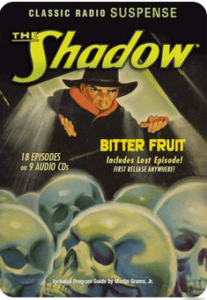
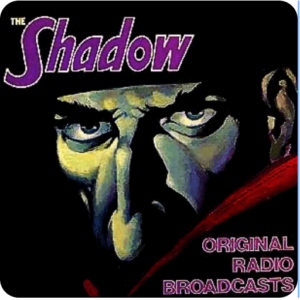
The premise was, by today’s standards, impossible to believe, but in the 1930s and 40s, an age of comparative innocence, people accepted the improbable. Orson Welles starred in several of these half hour episodes in order to finance his Mercury Theatre company.
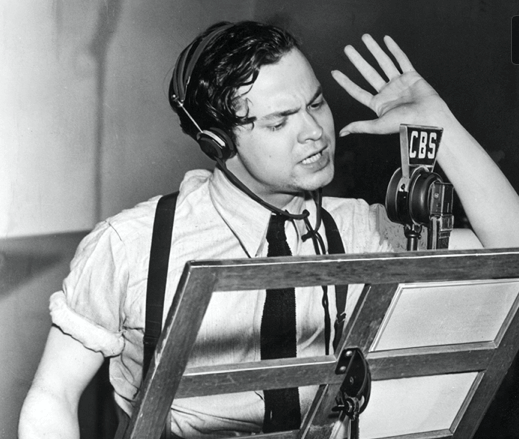
Welles never rehearsed. He would be rushed by ambulance, siren wailing, from a Broadway theatre where he was rehearsing his next production, to a radio studio where he would arrive just before air time.
His distinctive, cultured voice would bring the character of Lamont Cranston to life for thousands of people who would hang on his every word as the story unfolded.
“Who knows what evil lurks in the hearts of men …the Shadow knows.”
https://www.youtube.com/watch?v=-UTEiKuQC5U
Old time radio to me is a connection to my childhood when we used to sit around the kitchen table, listening to shows like “Gangbusters” and “Gunsmoke,” while we ate popcorn and talked about what was happening in Dodge City, or the backstreets of New York, or Chicago.
We were small town people taking a journey through radio to places we might otherwise never see or experience. It was like having the actors we saw on a movie screen coming to our home and speaking directly to us.
And there was always a mail-in offer from sponsors. If you mailed them a certain number of cereal box tops, you might receive a decoder ring, or a membership in a secret crime fighting society. I remember as a four year old, putting a shredded wheat box top into our mail box, without an envelope, or a stamp, hoping I would receive an autographed photo of Hopalong Cassidy, and through some miracle it arrived two weeks later! No idea if it was the postman or my parents who made it happen, but it was such a thrill to get something like that in the mail! “Hoppy” was my friend forever!
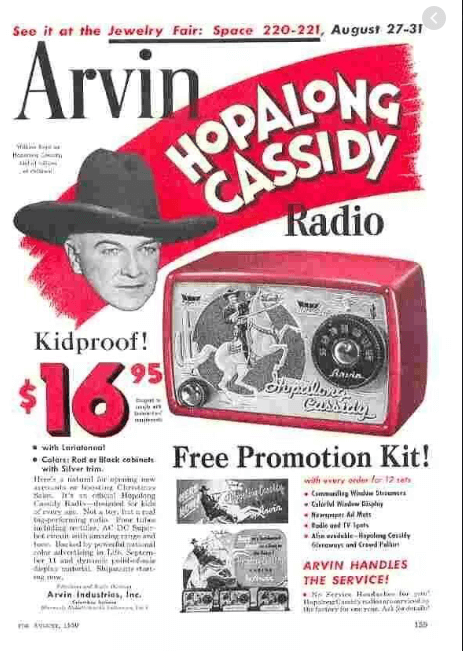
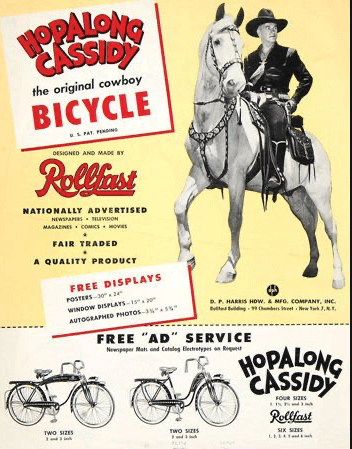
Radio was a major advertising medium.
Stars of the silver screen were lured to radio with exorbitant salaries that helped pay for the mansions and the Duesenbergs that personified Hollywood royalty. Ed Wynn who never really wanted to go into radio was asked what it would take to get him on the air. He replied “$5000 a week” and was handed a pen and contract.
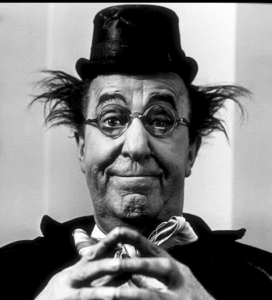
In 1946 Bing Crosby was paid $8,000 a week for his show on the ABC Radio network, the equivalent of over $100,000 a week in today’s money.


Quite a few stars endorsed tobacco in those days.
Unfortunately, a high salary like Crosby’s resulted in the supporting players receiving much less. Most of the actors surrounding the star would get something like $40 a week, which, in those days, was still a livable wage. Tax rates for those earning more than $70,000 a year as individuals were high, rising to 91%. But, by producing and selling their own shows, some stars were able to get a 25% tax rate.1
The extraordinarily popular George Burns and Gracie Allen were getting $9,000 a week.
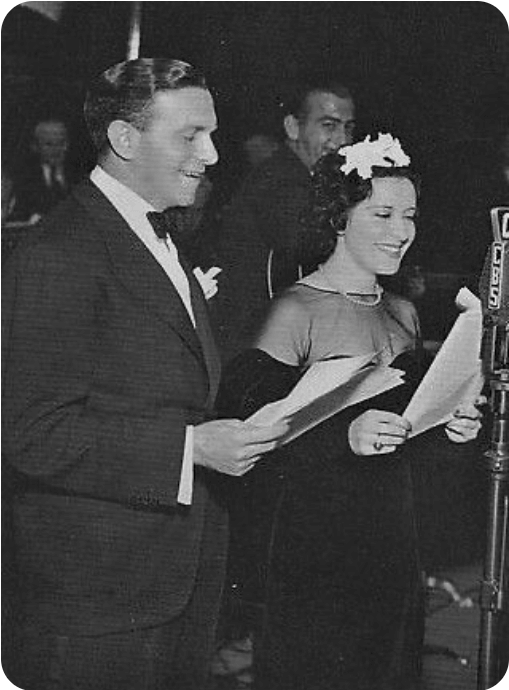
Audiences fell in love with the scatterbrained Gracie and sympathized with the ever patient George Burns as he tried to unravel the confusion that surrounded Gracie wherever she went.
I hope these extracts encourage you to explore the world of old radio online or CD. They are a great window into a bygone era.
I’m going to be involved in the publication of a series of Film Noir novels based on some Dennis Pratt’s screenplays. His stories are unpredictable, full of poetic imagery, leavened with irony. To give you a sense of that, here’s the blurb from his last novel ANGEL UNKNOWN:
“The dead and the living come together in this hard-edged story of faith and redemption. A mentally challenged boy experiences the supernatural when he braves countless dangers to take his critically ill sister on a 2,000 mile odyssey to reach Hollywood where they hope to find Dr. Ned, a television character whom the boy believes is the only man alive able to save his sister. These two children will need all of their spiritual strength because waiting for them at the end of their journey is a pink-cheeked, baby-faced serial killer looking for his next victim.”
1. Source: https://www.latimes.com/business/la-fi-nocera-tax-avoidance-20190129-story.html
